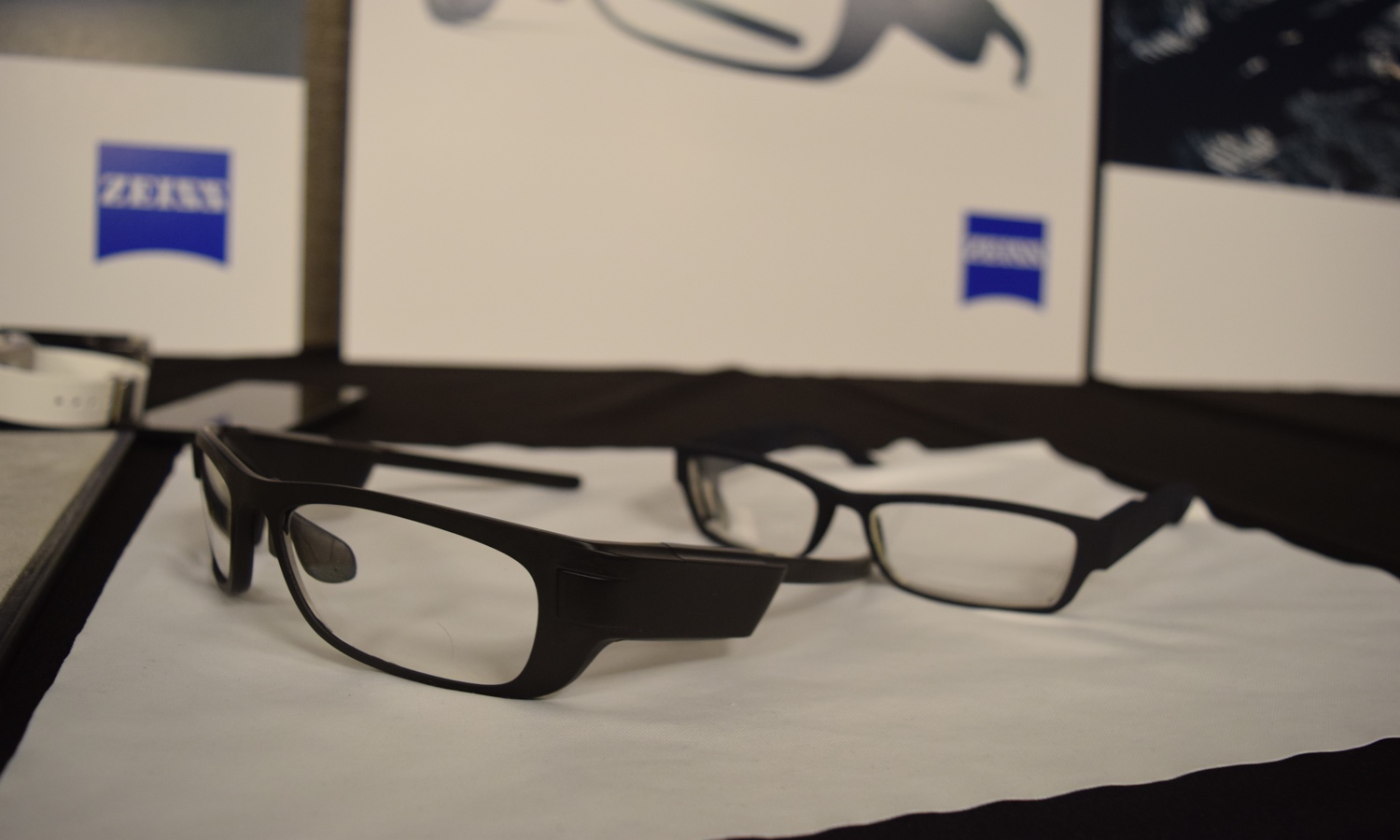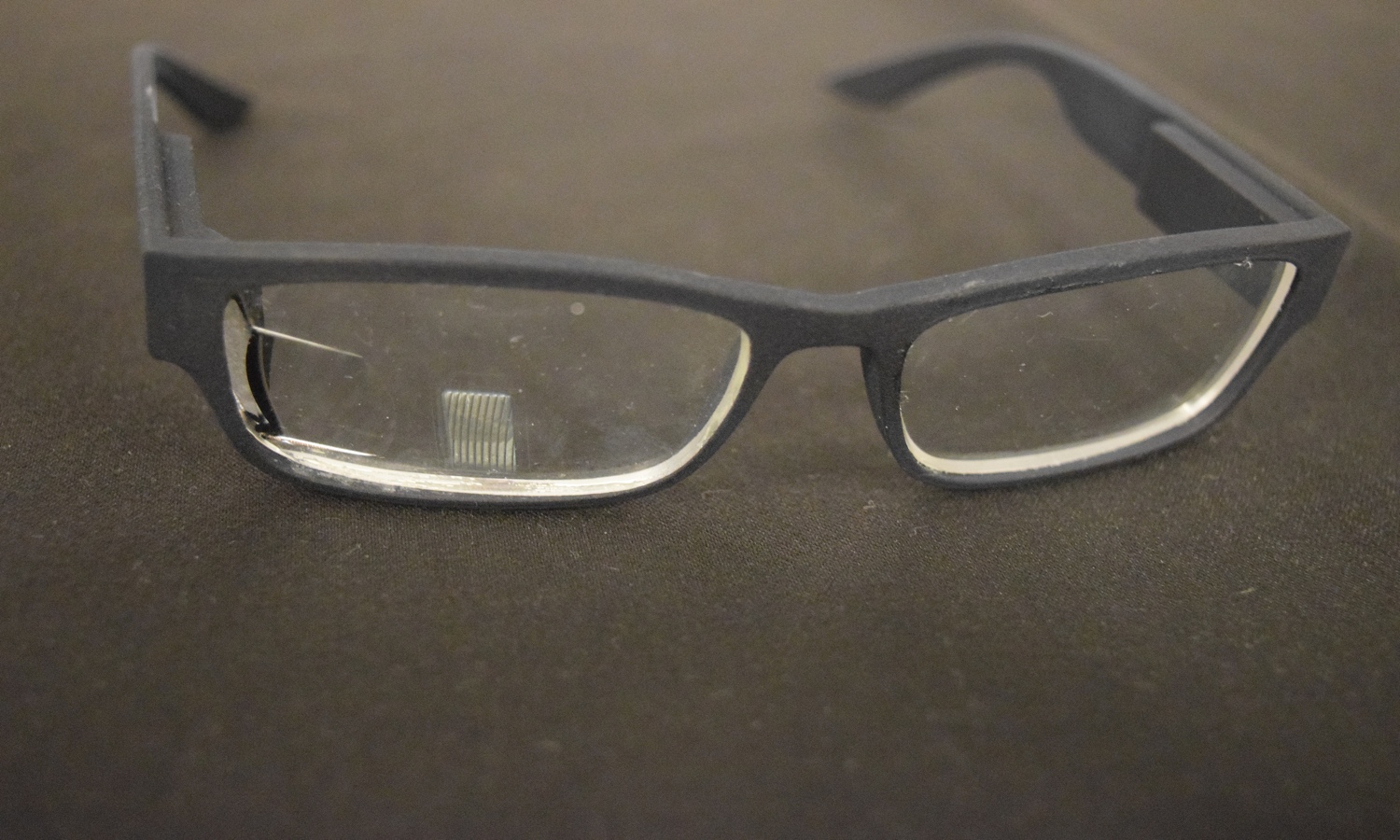Carl Zeiss Smart Glasses Won't Make You Look Like A Glasshole
Carl Zeiss Smart Optics has a Google Glass alternative that delivers data on the go in a much more subtle and less obtrusive way.

Google could learn a thing or two about glasses from the Carl Zeiss Group. During CES 2016, the company's startup venture, Smart Optics, unveiled its prototype for the next generation of data-delivering eyeglasses. It has integrated a small, strategically-placed OLED display and a fresnel lens (a flat lens comprised of a series of concentric circles), creating a non-obtrusive augmented data delivery system.
In layman terms: Smart Optics just made Google Glass socially acceptable.
Goodbye, Glassholes

Instead of the overt, obnoxious presence of Google Glass, Smart Optics provides an incognito solution that doesn't out the wearer as a potential provocateur. Zeiss' optical solution is integrated into a curved lens -- the first of its kind. The curvature means that the system can be used on prescription lenses that can be fitted into a regular pair of eyeglass frames. It's a much welcome change from the chunky overlay that was dorky at best.
MORE: Will Wearables Replace Your Smartphone?
Reflection vs Projection
However, using a curved lens is more than a cosmetic decision. Smart Optics reps hinted towards the potential danger of consistently projecting images directly into the eye the way Glass did. The tiny fresnel lens and OLED display work to create a series of reflections that deliver information to the wearer's eye in a manner that's presumably safer for long term use.
I Wore the Future

During the demo, I had the opportunity to don a pair of Smart Optics' prototype glasses. Hooked up to a small Wi-Fi connector, the frames were transmitting data from a nearby phone. The frames were a bit big for my face, so I had to do a bit of maneuvering to find the sweet spot. However, once I did, I could see icons for messaging, photos, sports and navigation.
From there, the Smart Optics' rep opened a slideshow of different nature photographs. In one shot, I saw a vibrant red sunset while another photo showed of a line of trees decked out in golden autumn finery. Although I could see the images, I found myself taking a few seconds to make out some of the more details.
Get instant access to breaking news, the hottest reviews, great deals and helpful tips.
MORE: Augmented Reality Glasses: What You Can Buy Now
Work in Progress

For instance, I announced that the person in the sample video I was watching was snowboarding, when they were in fact skiing. Smart Optics remedied this situation after determining I was far sighted and handed me a couple of lenses. In what felt like a scene out of an optometrist visit, I was switching lenses to get a clearer picture. Everything suddenly came into focus with a lens that the rep said was - 2.
Subtle Is the Way I Like It
With a lens that sufficiently offset my farsightedness and slight astigmatism, the words under the icons were a lot sharper. I easily read out the date from an incoming stock market report as well as the words from a sample text. While wearing those admittedly good-looking frames and getting in touch with my inner Clark Kent was fun, the best part of the experience was that the glasses looked perfectly ordinary. Although I was receiving all kinds of information, to most people, it would have appeared I was gazing off into the distance or engaged in deep thought.
MORE: What's Next for Wearable Tech
Good Potential
The Zeiss Group's expertise lies in creating optical innovations, and Smart Optics retains that pedigree. Although the demo I participated imagined the lenses in a wireless connection, Smart Optics prefers an outside party provide that part of the equation while they focus on the lenses. That's why the group is currently in talks with a number of companies for potential partnerships.
It could be 12 to 18 months before socially acceptable data glasses are available to buy with Zeiss' tech inside, but this prototype is an exciting first step.

Sherri L. Smith has been cranking out product reviews for Laptopmag.com since 2011. In that time, she's reviewed more than her share of laptops, tablets, smartphones and everything in between. The resident gamer and audio junkie, Sherri was previously a managing editor for Black Web 2.0 and contributed to BET.Com and Popgadget.
